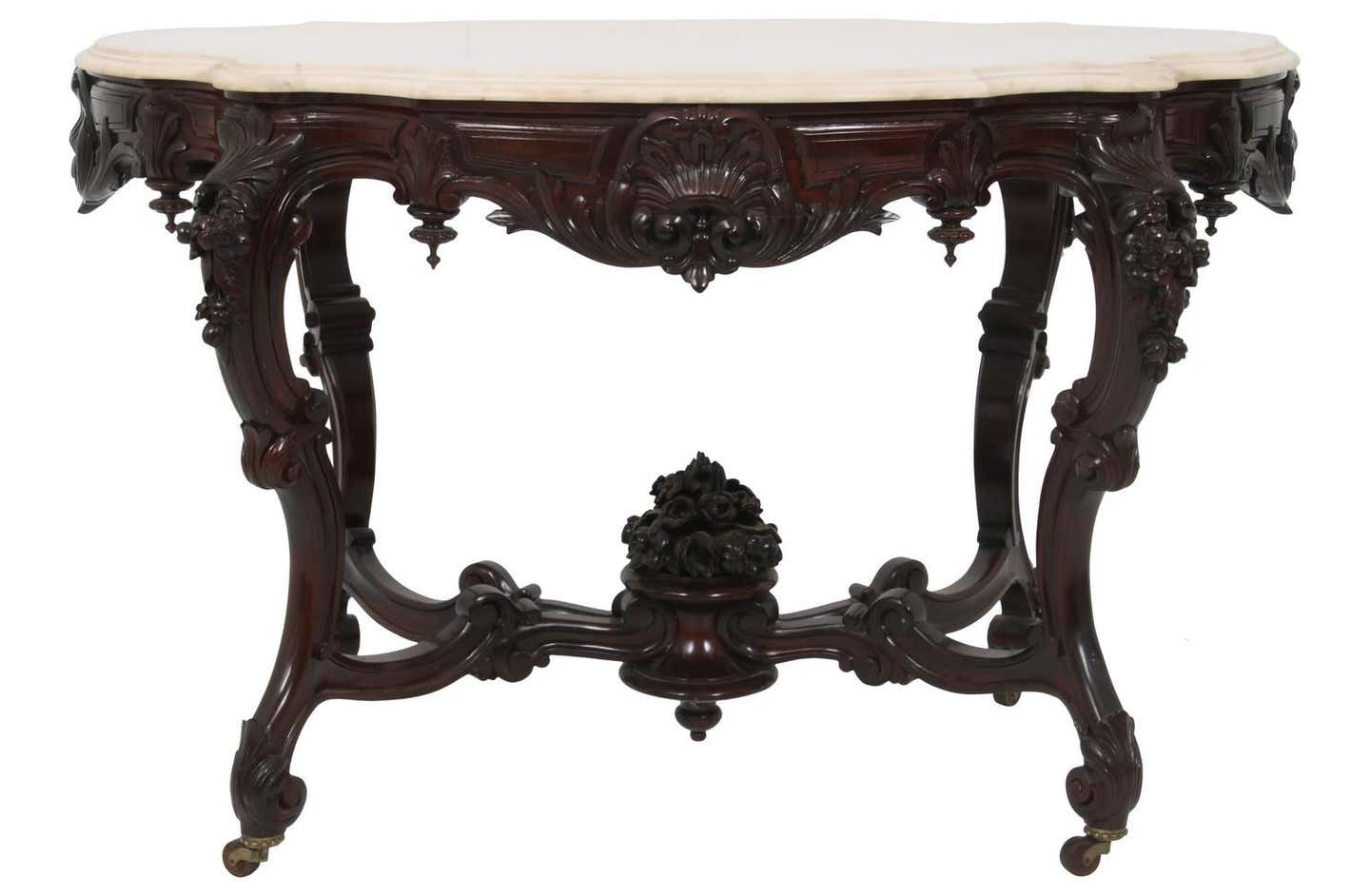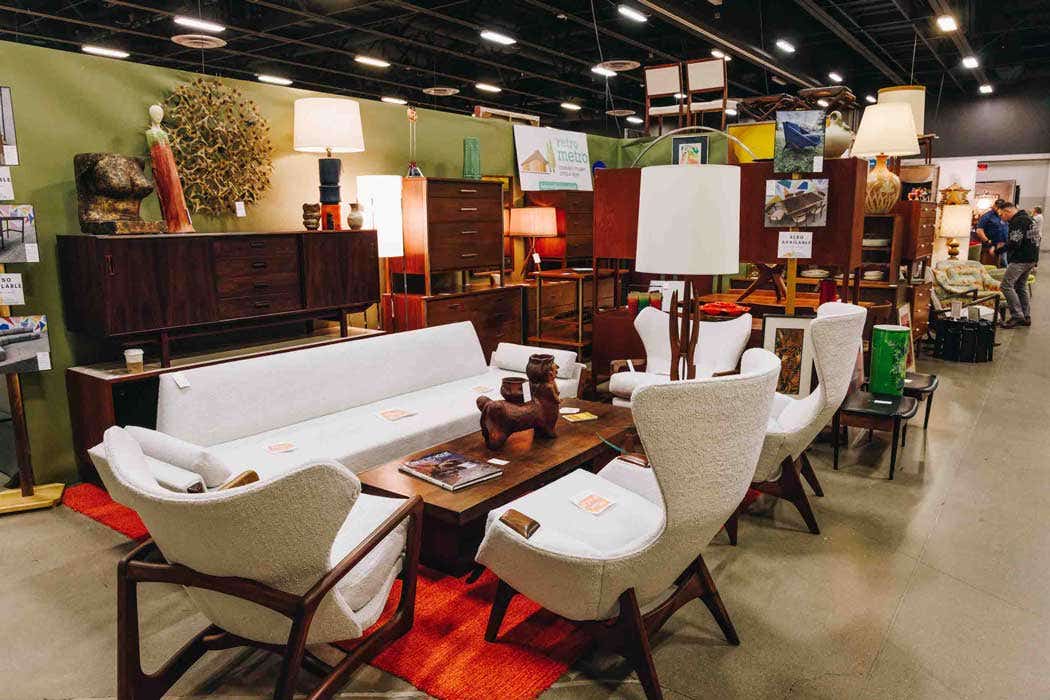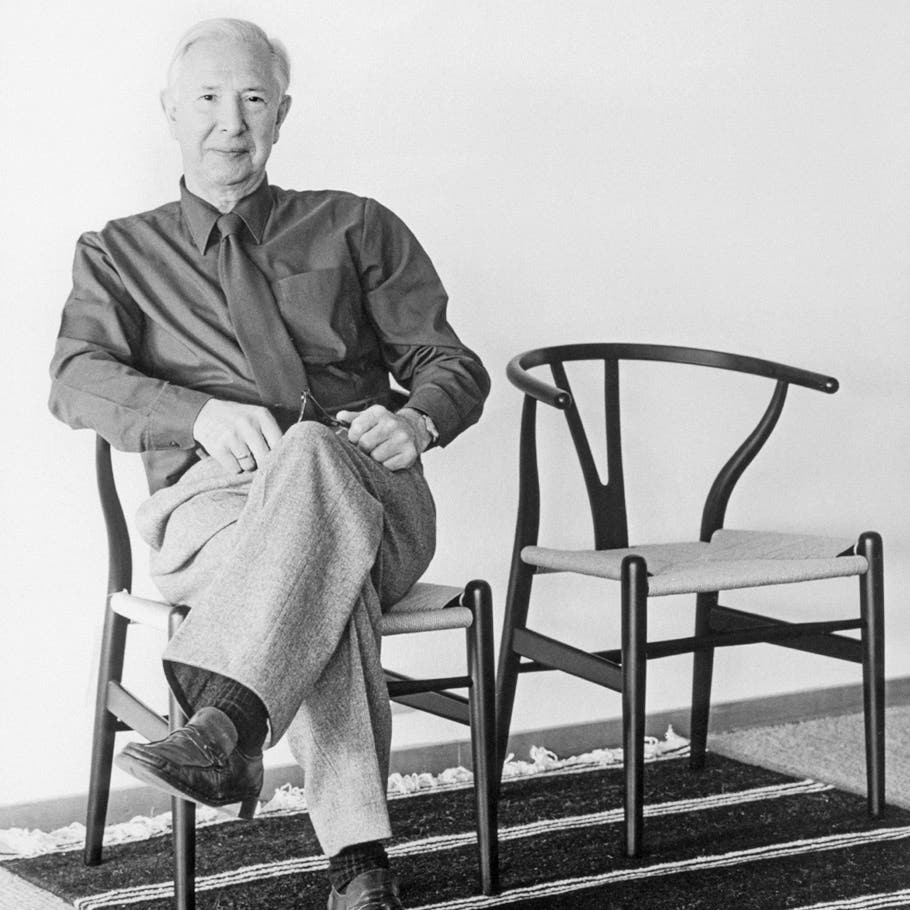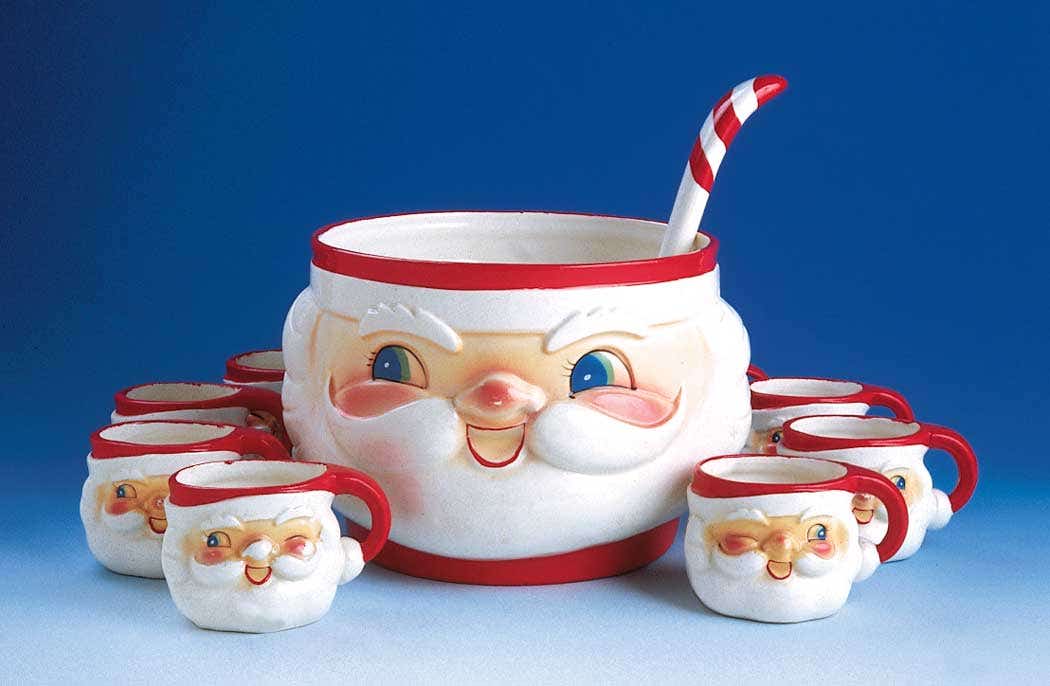Furniture Detective: Dealing With a Formica Top on a Heywood-Wakefield Table
Furniture Detective Fred Taylor helps a collector determine the best course for dealing with a formica top on a Heywood-Wakefield table.
Q: I enjoy your articles and hope you can help with a couple of questions. We recently acquired a Heywood-Wakefield china cabinet and dining room table and chairs from my husband’s family. It is Early American in design (Cinnamon color), and my husband remembers it from the 1950s, when it was most likely acquired new. The chairs are all marked with the HW logo and the word “Cinnamon.” The table is not marked, but matches identically in style. Underneath the table, a white and blue tag has been torn off, except for information regarding the pattern number: 8575 F and the finish: Andover #48. My husband is sure his parents purchased the set together, new, and with the hutch, in the mid-1950s. All are solid maple.
The problem is that the solid maple table, measuring more than 8-feet long with leaves extended, has a formica top. Would you suggest that we remove the formica to increase its value? Though we plan to keep it for several years, we will want to sell it one day when we downsize.
Also, has Heywood-Wakefield’s Early American design reached any degree of popularity yet?
— S.T.
A: One thing I really like about this work is the opportunity to learn. I did not know that Heywood-Wakefield made “Colonial” furniture until I got a chance to research this question. It turns out that H-W was in the Colonial business long before it was in the modern business. In 1929, the company offered a complete suite of matching furniture in Early American style. The primary line in that style was known as “Old Colony” and featured Windsor type turned chairs in the sets. Colonial furniture was the mainstay of the company throughout the 1930s while it developed its Modern lines. The Old Colony was cheaper to produce than the Modern because it used darker heart wood than the lighter, more expensive sap wood used in the Modern.
A new line of Old Colony was introduced in 1947, and this was the line that carried into the 1950s that you have acquired. The company let the line expire in the early 1960s when it faced increasing financial pressure. However, your table is not a Heywood-Wakefield table. It was made by Tell City. Tell City used a blue and white tag and also had a #48 Andover finish.
I could not determine if the formica top was original to this line of furniture, but it almost doesn’t matter. Whether or not it is original, it will be very difficult to remove if it was properly installed, and what you find below may be worse than what you have. I suggest leaving the laminate top.
Unfortunately, while the early H-W is well made, quality furniture, no great market has developed for the H-W Colonial lines, and there are no specific dealers or collectors that I am aware of. The best way to get a value is to look at comparable items from such quality makers as Conant Ball and Nichols & Stone.
---------
Q: I need some information about a Sears china closet in very good condition and original finish. The lady who had this said it was one of the first ones Sears made. She got it from some people in South Carolina in 1965. Could you tell me the year and value of this closet?
— D.S.
A: Well, it makes a good story. Unfortunately, it isn’t true because Sears did not make any of its furniture. It was all contracted out or bought wholesale from regional suppliers. They did a lot of business in Rockford, Ill., which was reasonably close to corporate headquarters in Chicago. A careful reading of any of the old catalogs such as the reprint of the 1902 edition will reveal little hints in the text about the outside sources of the goods. For example on page 746 of the 1902 book is the following: “Our dining room and kitchen chairs are strictly high grade, made for us under contract by the best maker in America.” The description of another chair on the same page says, “It is made by one of the finest furniture manufacturers in the country whose name is a guarantee of material.”
Around the turn of the century, Sears was also one of the largest retailers of pianos and organs. The grand pianos were made by Beckwith but the spinets were made by many different manufacturers.
Your quarter sawn oak china cabinet has the architectural and stylistic elements of the American Empire period from the 1820s to 1850s, which includes the paw feet and the modest “S” scroll of the front stanchions which support what appear to be lion figurals.
But this cabinet is surely a 20th century piece, ranging anywhere from 1900 to as late as 1920.
Cabinets of this period and this style range in price from $1,000 to $2,000 depending on condition.
With more than 30 in the antique furniture business, Fred Taylor is a household name when it comes to the practical methods of identifying older and antique furniture: construction techniques; construction materials; and style.








